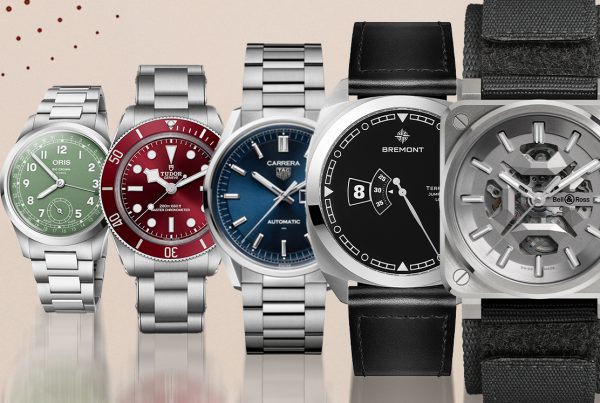Chart the history of this feat of horology
The 26th of June marks a significant day for Breguet and for the world of watchmaking. That’s because 220 years ago, Abraham-Louis Breguet earned the rights for a patent for a new type of regulator called the Tourbillon (French for ‘whirlwind’). His creation would not only be considered a watchmaking masterpiece, but a revolutionary invention that would endure and transform horology for all time.
Considered one of the most fascinating horological movements ever built, Breguet fashioned the idea of the Tourbillon through his deep knowledge of physical laws. Realising that a watch movement was affected by changes in its position, he went about devising a way to eliminate gravitational to ensure timekeeping accuracy.
He did this by installing the entire escapement – the balance and spring, lever, and escape-wheel – the parts most sensitive to gravity inside a mobile carriage that performs a complete rotation on its own axis every minute.
Refining Time

Tourbillon No. 1188. Picture courtesy of Breguet
The Tourbillon not only improved the accuracy of pocket chronometers, but it also provided an additional benefit – the constant change of point of contact undergone by the balance pivots in their bearings ensured enhanced lubrication.
But the movement was extremely complex to make and perfect, requiring both a high level of skill and time to produce. It would take another four years before the Tourbillon was commercialised. Reportedly only 35 examples were sold between 1805 and 1823, the year of the maestro’s death.
Nevertheless, the greatest devotees of horology were unable to resist its appeal. Famous patron and Italian collector Sommariva, Monsignor Belmas, Bishop of Cambrai, the Bourbons of Spain were drawn to it, owning up to three Tourbillons acquired between 1808 and 1814. So was the Prince-Regent of England who acquired a large-sized Tourbillon in 1814, mounted on the top of a gilt bronze cone.
More importantly, his invention help inspire the industry, his successors, and next generation of watchmakers who have not only honoured the maker by perpetuating this exceptional expertise but also enriching it with fresh and updated innovations.
Continued Evolution
A 180 years later Breguet’s game-changing invention would receive a renaissance after being incorporated into wristwatch form in the 1980s. Despite Although the advent of modern manufacturing, it remains one of the most difficult mechanical complications to make, which explains its considerably value amongst collectors.
Today, the Tourbillon serves as a showcase of skills and ingenuity of a watchmaker. Breguet continues to be at the forefront of this segment, with notable pieces that still carries with them its founder’s pioneering spirit.
It is fortunate too that the watchmaking brand continues to produce stunning examples of the Tourbillon. As seen in some of its most recent examples, the Tourbillon has not just helped define watchmaking excellence and mechanical mastery but also horological beauty.
Classique Double Tourbillon 5345 “Quai de l’Horloge”


This unique piece demonstrates the brand’s mechanical virtuosity, with a pair of twin rotating tourbillons. Affixed by a bridge to a centre plate, each driven by its own mainspring, complete a rotation in 12 hours.
A chapter ring with Roman numerals on a sapphire disc and centre plate hand-engraved on a rose engine, rounds up the design of this 46mm timepiece finished in 950 platinum.
However it is on the back that the full character of the timepiece truly comes alive. Here you will find a hand-engraved façade etched in gold of the building once occupied by Abraham-Louis Breguet in 1775 at 39 Quai de l’Horloge, Paris.
Marine Tourbillon Équation Marchante 5887


A coveted piece that exemplifies Breguet’s rich history in watchmaking with a running equation of time, perpetual calendar, and tourbillon. Combining the bold and sporty aesthetic of the Breguet Marine Line, it arrives in 43.9mm rose gold case fitted with a self-winding movement, balance silicon spring, with day, retrograde date, month, and leap year indications as well as a power-reserve indicator.
The applied Roman numerals as well as the Breguet moon-tipped hands are presented in rose gold. Emphasising the link between the Marine line and the sea is a guilloche-peaked wave motif in the centre of the dial. On the back, a hand carved depiction of the Royal Louis, an ancient flagship of the French Navy, adorns the bridges of the movement.









